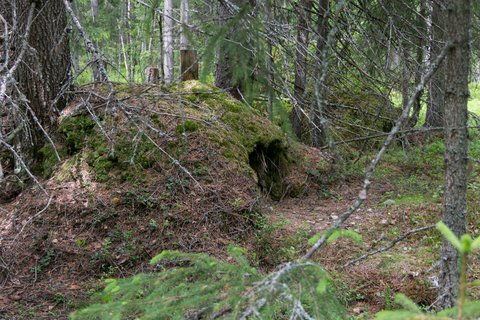This is the time of year when bears wake up from their winter naps, and although most of them will be up and around before backcountry trails open, there is still a possibility of stumbling upon a sleeping bear.
Most people think that bears emerge from their dens with a voracious appetite and aggressively search for food anywhere. The truth is that they wake up just like us, groggy and calm. They often wander around lazily for a couple of weeks until their metabolism shifts. So, are you safe if you accidentally disturb a bear? Most people don’t want to find out.
When wildlife officials realize a hibernating beer is near a trail they will often close that area to recreation, such as the case recently in Calgary.
It is a common misconception that all bears hibernate. In fact, studies now show that most bears enter a state called torpor where their body temperatures remain high, but their heart rate slows down. Many bears actually get up and snack during their winter sleep and this may help identify where they are if you are out and about in bear country in the winter.
Bears love to find cozy dens that are naturally made such as small rock caves and hollow trees. I always use caution when I encounter one of these natural dens. An easy way to think of it is “If I were a bear, would I pick that as a den?” “Would I feel safe there?”
Bears are very smart and usually prefer to den away from trails and routes that attract human travel. It’s pretty unlikely to find a bear den close to a popular trail. However, in areas where bears have a lot of human interaction, you might find one under your house. It happens often!
In higher elevations, bears often prefer north slopes. They tend to den higher on the mountain and prefer areas that are beneath rocky cliffs where they are more sheltered. Snowfall can make it difficult to identify a den as tracks and scat are covered up. Once again, unless you decide to go prowling around caves and natural looking den sites, you’ll probably never encounter a bear.
Foothill locations are a bit different and locating a den is fairly easy. The first giveaway is a lot of scat. Bears tend to defecate in the same spot every day so if you encounter huge piles of bear scat, you’re probably near a bear den or bear bed. Another thing to look for is a lot of shredded bark. Bears love to spread up soft wood (especially cedar and redwood) for their mattresses.
Fallen logs are a great place to build a den. If you find a big fallen tree that looks like it has been clawed on and shredded, and a large pile resembling a big nest, it’s probably a good idea to steer clear of it.
Although people think that waking a sleeping bear will result in an attack, chances are that you are only going to disrupt his sleep. Many popular winter trails are closed when a bear den is discovered nearby so the bear doesn’t get disturbed, not so much because of the danger to the public—unless the bear has cubs and everyone knows how mothers protect their young. Nobody wants to guess at that one.
Awareness and common sense are your best defense when traveling in bear country during the winter months. The old adage “Curiosity killed the cat” goes along way when you consider whether or not to explore that cave or peek under that fallen log with a hole under it. I don’t know about you but I get really agitated when someone wakes me up from a nap…
© Andreas Argirakis | Dreamstime.com – Bear\’s den








